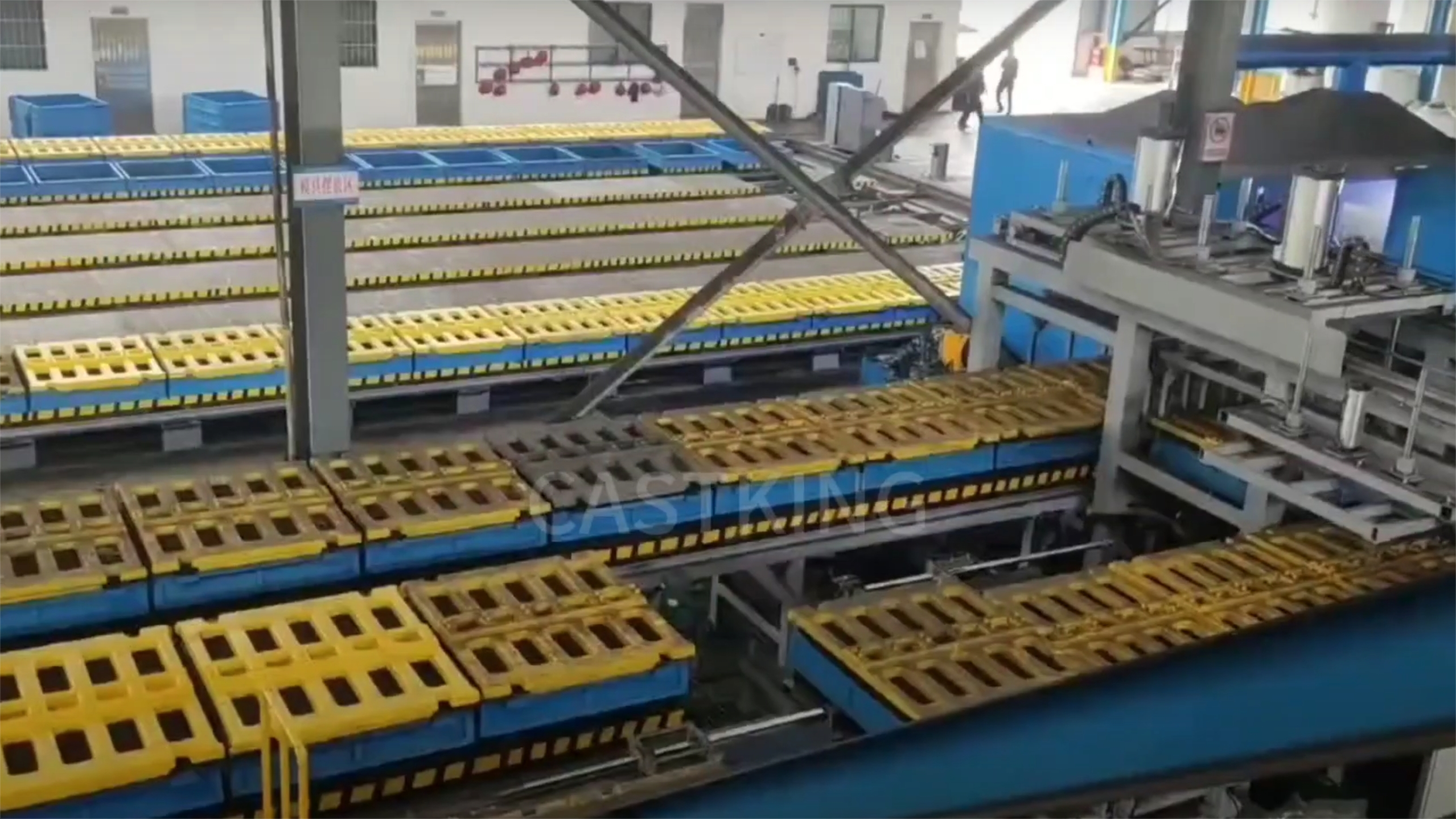A sand-casting molding machine is a specialized system used in foundries to automate the technique of creating molds for casting metal elements. It performs a crucial function in the sand casting method, which entails forming a hollow mold from a mixture of sand and a binder, commonly clay. The molding machine allows this by compacting the sand aggregate around a pattern, which is a duplicate of the desired component to be forged.
These machines are available in numerous kinds, every kind is designed to optimize extraordinary components of the molding process, such as mold compaction, pattern removal, and sand dealing. Key features of sand-casting molding machines encompass their capability to deal with molds of varying sizes and complexities, from small additives to big commercial components. They ensure steady mold exceptional and dimensional accuracy, which are critical for generating splendid castings with minimum defects.
Current machines regularly incorporate advanced control structures and automation technology to enhance performance, reduce labor charges, and enhance universal productiveness in foundry operations. Furthermore, sand casting molding machine are important in industries that include automotive, aerospace, and manufacturing, where the capacity to provide complicated metallic parts efficiently is paramount.
Methods by Which The Sand Casting Machines Minimize Their Impact on the Environment
Modern sand-casting molding machines have been extensively developed to mitigate environmental effects through advanced technology. They optimize sand usage with sophisticated sand management structures, lessen energy intake via electric-powered or hybrid structures, and hire emission manipulation technology like particulate filters. Here's an in-depth exploration of the way these machines mitigate environmental influences:
Advanced Sand Management Systems
Superior sand management structures in present-day sand-casting molding machines optimize sand usage and minimize waste. These structures consist of sophisticated sand reclamation methods that recycle and reuse sand from used molds, lowering the need for sparkling sand and holding natural assets. Improved binder technologies similarly enhance sand reusability, lowering the quantity of binder required in line with mold. Together, these advancements promote sustainable practices via minimizing material waste and the environmental impact associated with sand casting operations.
Energy Efficiency Improvements
Present-day sand casting molding machines prioritize strength performance through electric-powered or hybrid systems, changing conventional hydraulic setups. Those improvements appreciably reduce power consumption and greenhouse gas emissions during operation. Moreover, integrated warmness restoration systems capture and reuse warmness generated in casting procedures, similarly improving ordinary energy performance. These advancements not only lower operational costs but also align with environmental sustainability goals by minimizing the device's carbon footprint.
Emission Control Technologies
Modern sand-casting molding machines employ advanced emission control technologies, including particulate count number filters and scrubbers. These systems successfully seize and deal with emissions from melting furnaces and other casting techniques, ensuring compliance with stringent air quality regulations. Non-stop emission tracking structures are also utilized to reveal pollutant levels in real-time, allowing for immediate corrective movements if necessary. These technologies contribute to lowering air pollutants and environmental effects associated with sand casting operations.
Water Management Strategies
Modern-day sand-casting molding machines implement efficient water control techniques to limit utilization and contamination. Closed-loop water structures are employed for mold cooling and different water-extensive tactics, decreasing typical water intake and wastewater discharge. Superior water treatment technology treats and recycles wastewater to meet regulatory requirements earlier than discharge, ensuring minimum environmental impact. These techniques no longer only effectively preserve freshwater sources but also enhance operational sustainability.
Material Efficiency and Waste Reduction
Modern sand-casting molding machines prioritize material performance and waste reduction via lean manufacturing practices. They minimize material waste by optimizing mold layout and utilizing green gating and riser techniques. Scrap metal and other materials generated during casting operations are regularly recycled or reused to create a circular economic system. By reducing waste and optimizing resource use, these machines reduce environmental effects and operational costs at the same time as improving normal sustainability in sand casting tactics.
Noise and Vibration Reduction
Modern sand-casting molding machines include noise and vibration reduction measures to mitigate environmental effects. They function as soundproof enclosures and acoustic insulation around casting regions to decrease noise pollutants in surrounding environments. Vibration-damping techniques and materials are employed to lessen operational vibrations that might affect nearby communities. By way of addressing noise and vibration problems, those machines decorate places of job protection, enhance community relations, and make contributions to quieter and more environmentally friendly production surroundings.
Environmental Compliance and Sustainability Initiatives
Producers of cutting-edge sand-casting molding machines prioritize environmental compliance and sustainability. They adhere to strict guidelines concerning emissions, waste disposal, and resource control. Using imposing sustainable practices which include energy efficiency upgrades, emission manipulation technology, and water management techniques, manufacturers lessen their environmental footprint. This guarantees sustainable operations at the same time as assembly regulatory necessities and contributes to a cleaner production industry.
Summary
Modern-day sand-casting molding machines are at the vanguard of environmental responsibility in manufacturing. Through advanced technology, efficient practices, and strict compliance with environmental requirements, those machines now not only enhance operational performance but also reduce environmental impacts such as aid depletion, pollution, and waste technology. As enterprises continue to innovate, the mixing of sustainable practices in sand-casting molding machines will play a vital role in creating a cleaner, more sustainable future for manufacturing industries internationally.


